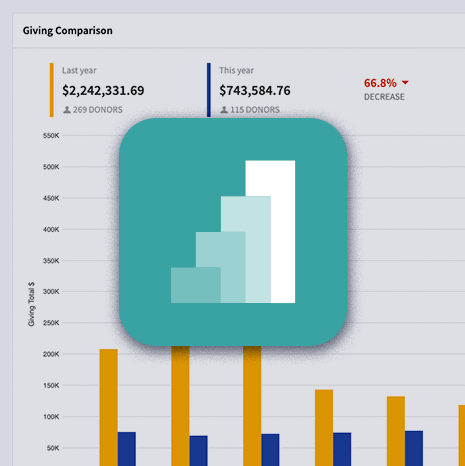What a Good Giving Statement Template Should Look Like
March 5, 2024 |
Giving statements aren’t simply valuable because they satisfy the IRS requirements created around church contributions.
Though the primary purpose of a giving statement is to satisfy those requirements, many churches miss out on this unique opportunity to deepen the relationship between the church and their members.
It’s not an exaggeration to say that a well-designed giving statement template is vital. Transparency builds trust, so when you present a clear breakdown of your congregants’ donations, detailing where each penny has gone, you earn the trust of your church members and help them to see all that the Lord is doing through their donations.
A giving statement is a crucial tool for nurturing a strong relationship between the Church and its donors. In the coming sections, we’ll delve into what makes a good giving statement template and why it should matter to you.
Key Components of a Giving Statement
Here is a quick summary of what your church-giving statement template should include.
Donor Information
While you will need donor details—name, address, and contact information—to meet the legal requirements of a giving statement, giving statements are also a chance to create personal connections. The difference between “Dear Donor,” and “Dear [Name],” is a small touch, but it makes all the difference.
Contribution Details
A well-crafted giving statement template should itemize each contribution, complete with dates and amounts.
By itemizing each donation, your congregants can see exactly when and how much they gave throughout the year. It’s a clear, concise record of their generosity. It also lets them see the cumulative impact of their giving; those $20, $50, or $100 donations add up, and they’re making a significant difference!
Remind donors that every penny counts, and by itemizing their contributions, you lay out the impact of their generosity in black and white.
Design and Layout Considerations
Imagine receiving a statement that’s cluttered, confusing, and hard to read. Not very appealing, right? That’s why your giving statement template should be well-organized and easy on the eyes.
Clarity and Readability
Strive to make your giving statement as reader-friendly as possible. A clear, legible font is a must (please, no comic sans or papyrus). That ensures that your donors can easily read and understand their statement. No one wants to squint or pull out a magnifying glass just to see how much they’ve donated!
An organized layout also means grouping related information together, using headings and subheadings to break up the text, and employing bullet points for easy reading. The goal is to make your giving statement as clear and comprehensible as possible.
Branding and Personalization
Your giving statement shouldn’t be a generic document—it should reflect your church’s unique identity. Incorporating branding elements like your logo, color scheme, and typography will make your giving statement instantly recognizable to your donors.
But don’t stop at branding—personalize your giving statements too! As we mentioned before, using the donor’s name instead of a generic greeting can foster a stronger connection. You could also include a personalized thank-you message to show your appreciation for their contributions.
Legal and Compliance Aspects
When it comes to donations, it’s not enough to manage everything just well enough—you must do it right. Software solutions like Pushpay are designed with these considerations in mind. They ensure your church not only collects and manages donations efficiently but also complies with all necessary legal and tax requirements.
Tax Compliance Information
Giving statements are an essential document for tax purposes. For donors, these statements serve as a record of their charitable contributions, which are often used for tax deductions.
But here’s the catch: not all donations are tax-deductible. And even when they are, there are specific IRS requirements that must be met.
IRS Requirements
According to the IRS, the donor must receive a written acknowledgment from a non-profit (like your church) for any single contribution of $250 or more. Moreover, this acknowledgment must include details about the donation, including the amount, date, and whether the donor received any goods or services in exchange for the gift.
Additional Elements to Enhance Your Giving Statement
Take your giving statements a step further to make them truly stand out:
Personalized Thank You Note
The giving statement itself is a form of acknowledgment, but why not add an extra touch of personalization? After all, your donors aren’t just numbers on a spreadsheet; they’re valued members of your community.
Including a customized thank you message adds a personal touch that can go a long way in building relationships with your donors. It shows them that you appreciate their individual contributions, and it makes them feel seen and valued.
Year-in-Review Highlights
It’s one thing to tell your donors that their contributions matter; it’s another thing to show them.
Why not include a brief overview of how donations were used throughout the year? Highlight key projects, accomplishments, or initiatives that were made possible thanks to their contributions. Show them the tangible outcomes of their generosity.
Not only does this give donors a sense of accomplishment, but it also encourages future giving. When donors see the direct impact of their contributions, they’re more likely to continue supporting your cause.
Digital vs. Physical Statements: Pros and Cons
In today’s digital age, most of our transactions, communications, and operations have moved online. It’s no different when it comes to giving statements. But does that mean physical statements are a thing of the past? Not necessarily.
Benefits of Digital Giving Statements
First off, they’re cost-effective. With digital statements, you save on printing and mailing costs. Plus, with software like Pushpay’s giving software, generating and sending out these statements is a breeze.
Tour our
Giving Product
A comprehensive solution for secure, cheerful giving & donor development.

Secondly, digital statements offer ease of distribution. Sending them is as easy as clicking a button. Your donors receive their statement instantly, no matter where they are in the world. And if they need to refer back to it later, it’s saved in their email.
Continued Relevance of Physical Statements
Despite the shift towards digital, there’s still a place for physical copies. Some donors might prefer a paper giving statement, whether for accessibility reasons, or simply because they like having a tangible record of their contributions.
The key here is flexibility. By offering both digital and physical statements, you’re not just accommodating your donors’ preferences, but showing them that you value their comfort and convenience.
A Good Giving Statement Template Is a Great Start
Creating an effective giving statement template is an art. It’s a balancing act between providing necessary information, designing for readability, ensuring legal compliance, and adding that personal touch to connect with your donors on a deeper level.
Design-wise, your giving statement template should be clean, professional, and easy to read. Consistency in formatting and fonts, along with the inclusion of your church’s logo and branding elements, can enhance the visual appeal of the statement. Remember, a well-designed giving statement will significantly improve the donor’s experience.
And always keep in mind the power of personalization. Including a personalized thank you note and a brief overview of how donations were used throughout the year will make your donors feel valued and appreciated.
Your giving statements are an opportunity to foster relationships, build trust, and show gratitude. So make sure you’re creating giving statements that do more than just report numbers. Tell stories. Acknowledge generosity. Inspire continued support.
Get a demo of our giving tool and see for yourself how easy creating giving statement templates can be!
Featured Content
You May Also Like
